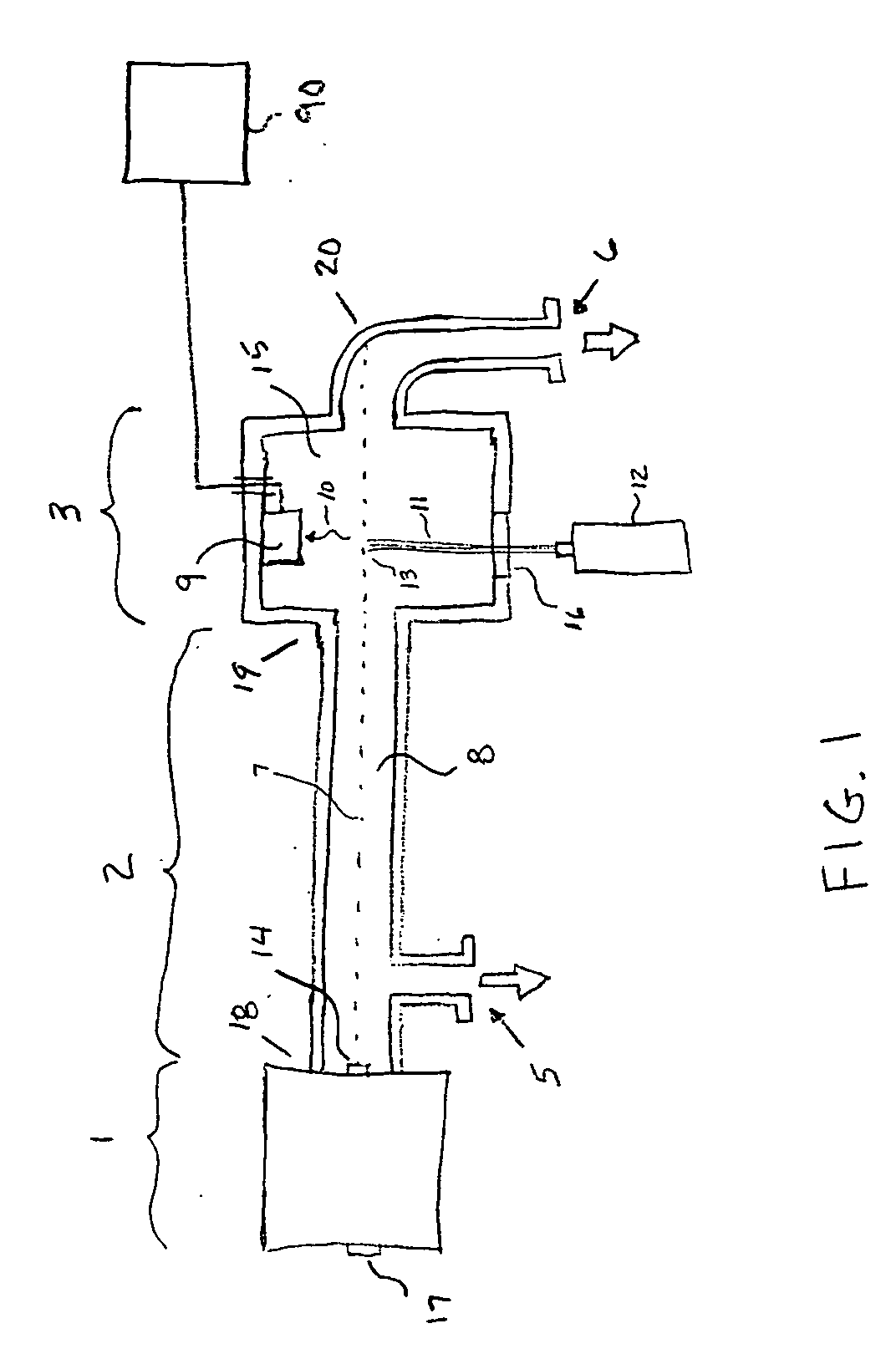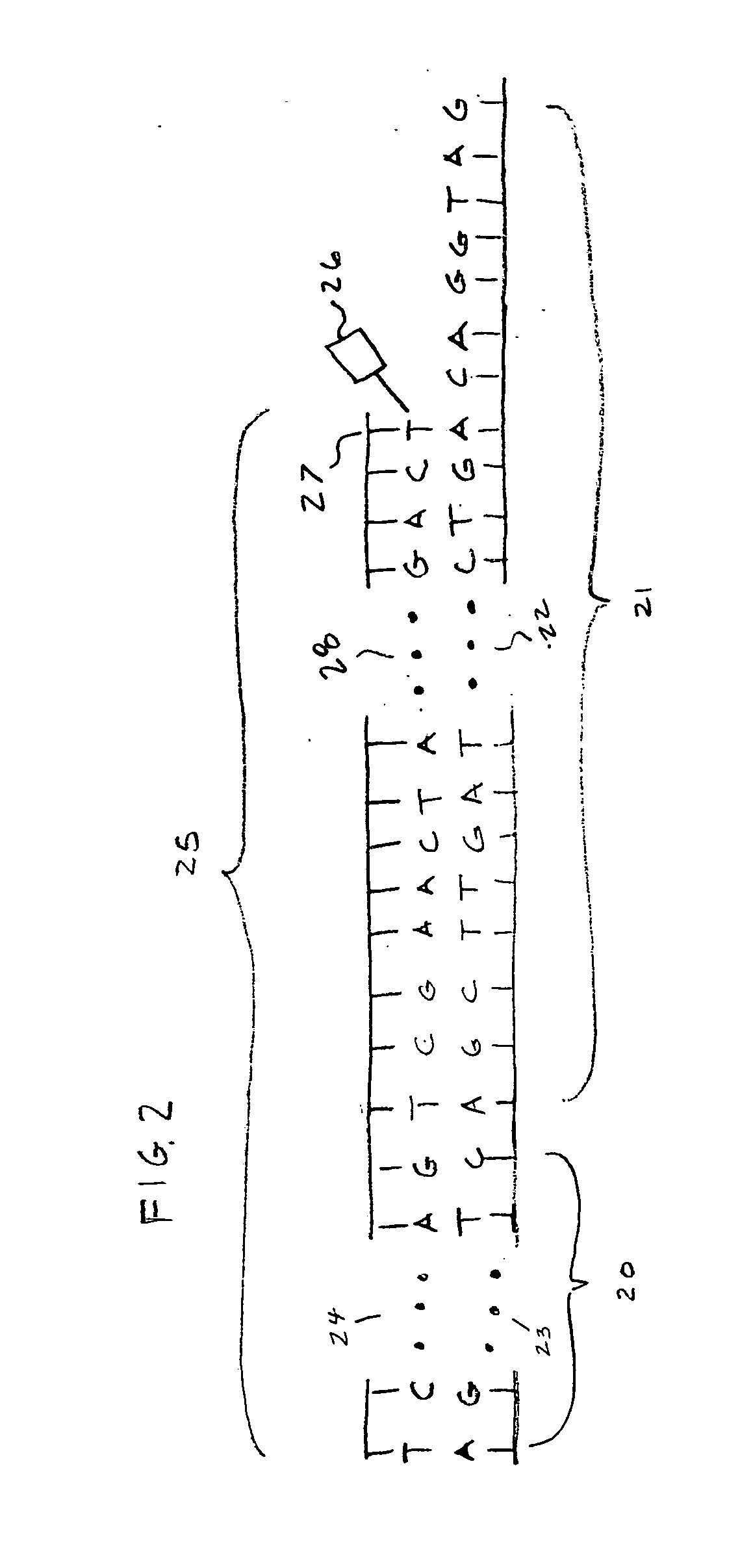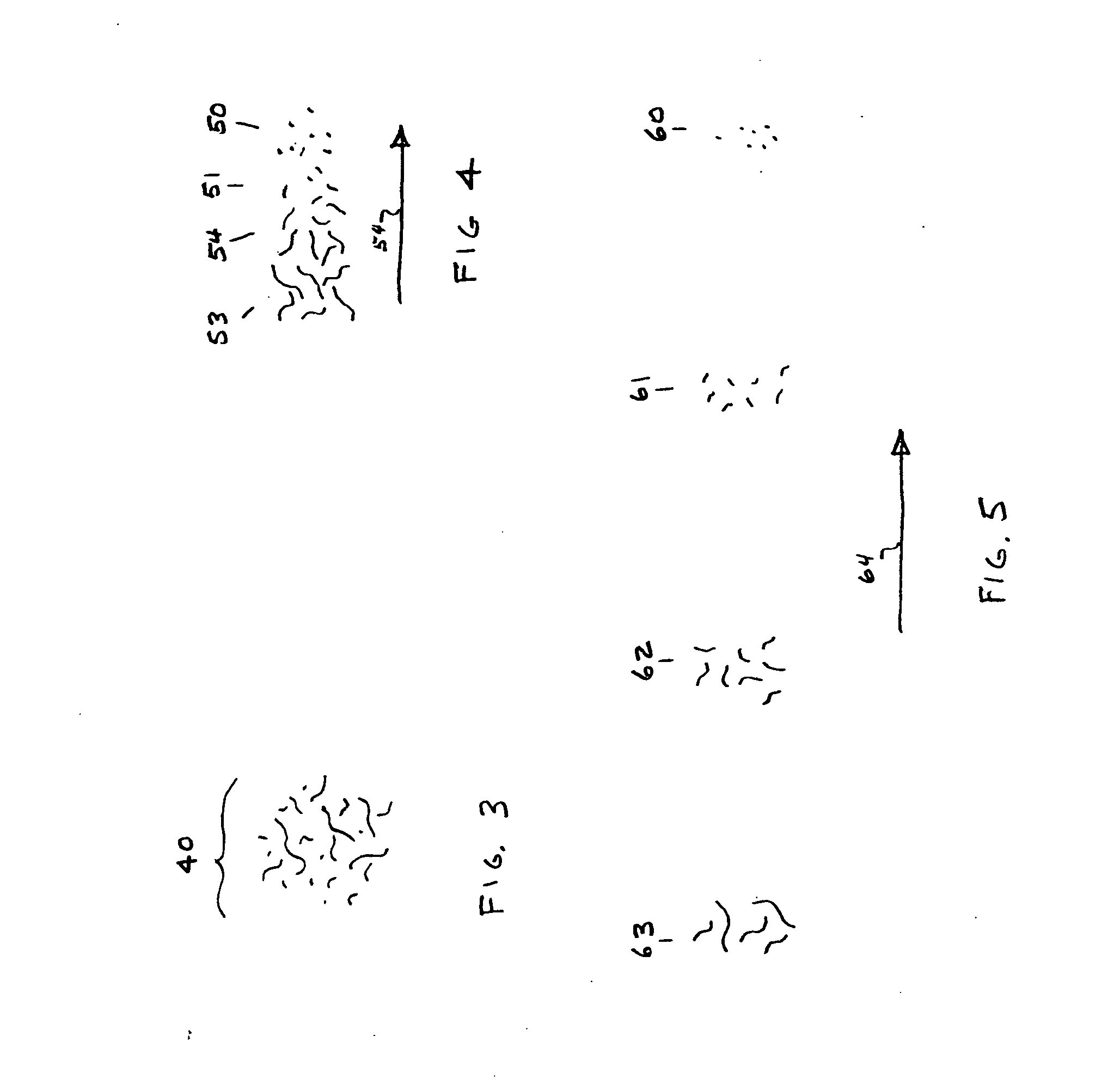High speed DNA sequencer and method
a dna sequencer and high-speed technology, applied in the field of high-speed dna sequencer and method, can solve the problems of not being able to meet the future needs of genomics, requiring very large amounts of sequencing capacity, and being entirely too slow and too costly
- Summary
- Abstract
- Description
- Claims
- Application Information
AI Technical Summary
Benefits of technology
Problems solved by technology
Method used
Image
Examples
Embodiment Construction
[0106] An example embodiment of the invention is an apparatus for determining the sequence of bases in a nucleic acid such as DNA or RNA. The basic steps involved in the process include: [0107] a) Making copies ranging in length from 1 nucleotide to the same length as the molecule under analysis [0108] b) Incorporating a base specific molecule at the end of the copy that corresponds to the base of the original molecule at that position and has a tag molecule that emits a uniquely identifiable spectrum when induced by external means [0109] c) Vaporizing the molecules [0110] d) Accelerating the molecules in a way so as to impart substantially the same energy to each molecule [0111] e) Allowing the molecules to travel for a sufficient time after acceleration so that the molecules are able to separated as a consequence of their differences in velocity [0112] f) Inducing emission from the molecules in a localized area of the path of travel after time for separation has elapsed [0113] g) ...
PUM
 Login to View More
Login to View More Abstract
Description
Claims
Application Information
 Login to View More
Login to View More - R&D
- Intellectual Property
- Life Sciences
- Materials
- Tech Scout
- Unparalleled Data Quality
- Higher Quality Content
- 60% Fewer Hallucinations
Browse by: Latest US Patents, China's latest patents, Technical Efficacy Thesaurus, Application Domain, Technology Topic, Popular Technical Reports.
© 2025 PatSnap. All rights reserved.Legal|Privacy policy|Modern Slavery Act Transparency Statement|Sitemap|About US| Contact US: help@patsnap.com



